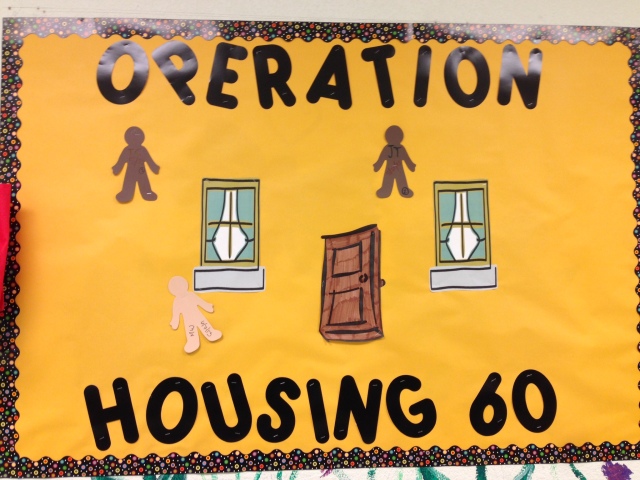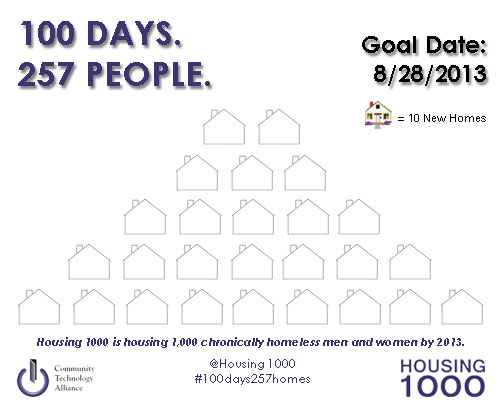Gregory A. Shinn, MSW, is the Associate Director of the Mental Health Association in Tulsa, Oklahoma. His organization is part of the 2.5% percent club of 100,000 Homes Campaigns that are on track to ending homelessness in their communities within four years. As the Associate Director of Tulsa’s Mental Health Association he is responsible for the development and implementation of many affordable housing programs and additional services for persons with serious mental illnesses.

Greg Shinn, Associate Director of Mental Health Association in Tulsa, Oklahoma
Q: How did you become involved with the efforts in Tulsa?
Greg: I moved to Tulsa from NYC in 2001. I had spent my career in a variety of homeless shelters and service settings in NYC, Chicago, and other urban settings. I saw time and time again that my clients faced challenges in accessing housing and how folks were cycled through systems instead of being placed in permanent housing.
I had the good fortune of working with Sam Tsemberis, the “Godfather” of Housing First as he conducted his Housing First pilot project. They housed people who were severely mentally ill and were still using drugs. At the time I thought, “There is no way this is going to work.” However, the results demonstrated that 80% of the folks who would have been considered the “hardest to serve,” were still housed 1 year later. After that, I became a Housing First believer! Then when I had the opportunity to take this job and be a part of increasing housing as the primary solution for chronic homelessness I knew this was the right answer and evolution of my career. Eleven years later, I’m still here and I oversee all the supportive housing projects for the Mental Health Association in Tulsa.
Q: I understand that in Tulsa, ending chronic homelessness has also become a jobs strategy. Can you tell me a bit more about how Tulsa is doing that?
Greg: We’ve created so many new jobs! Here at the Mental Health Association in Tulsa, 65% of our employees have a mental health disorder, and over 50% are formerly homeless. The more we can house people the more I can employ them both within our company and in our community. We are seeing a lot of our clients find employment once they have as stable place to live.
Operating the housing has also created a lot of jobs, from our internal property management to a variety of trades. We contract with local companies who hire local workers and purchase supplies from local vendors. We were also able to hire during the recession.
Q: How have you been able to house 8.9% of your chronically homeless population each month?
Greg: Owning and operating the housing has been the singular key to our success. Our folks would be screened out of housing if we relied on our local Housing Authority, private landlords, or other housing options. We’ve been able to create a very aggressive screening process to ensure the most vulnerable clients in our community are housed. At this point, we have identified the 100 most vulnerable men and women and are housing them right now. We are housing an average of 7-10 vulnerable homeless persons per month. What’s even better is we are creating jobs along the way.
In addition to developing the housing, we created A Way Home for Tulsa, which is a consortium of services providers in our local Continuum of Care. Each organization is funded to sit at the table and collaborate and coordinate services to prioritized chronically homeless individuals and families This consortium of entities was already on board when 100,000 Homes was launched, which made it easy for our community to decide to join the movement with our local campaign.
Q: How did your community decide to prioritize ending chronic homelessness?
Greg: Tulsa began to implement supportive housing programs in 1990. At the time, the Mental Health Association Board of Directors decided to buy and renovate a building that would be used as a transitional residence for chronically homeless clients that were mentally ill. We used funding from the U.S. Department of Housing & Urban Development to create a residence that provided shelter for 12 folks. A few years later, the Board decided to purchase a 16-unit building and then decided they were in the housing business. Having access to housing that could be used for our clients was critical.
An MHA Board Member, Mac Rosser, then had a vision for a larger capital campaign that would help us develop even more housing. The campaign was launched in 2001 and raised $5.2 million that we used to develop 6 additional properties. As a result, Tulsa has a safe haven and permanent residences for chronically homeless men and women that suffer from mental illnesses. When this happened a few prominent philanthropists recognized the capacity and success of MHA and decided it was possible to end chronic homelessness in Tulsa. They set a goal to create 511 units – with half of them dedicated to chronic homelessness.
The model we use is a 50% supportive housing model, which means that half of each development has low-income units and the other half are supportive housing with dedicated services. Many of these units came on line in 2008, which coincided with a cost study that showed that permanent housing was cheaper than people living on the streets. The capital campaign raised a total of $27.5M, some of which allowed us to build or renovate over 210 new units for chronically homeless men and women.
Q: How permanent is permanent supportive housing?
Greg: That is a question we think about all the time. Some communities are building the concept of “graduating” folks from supportive housing – a graduation process that is understood from the beginning of the relationship. In Tulsa, if you can graduate 30 people a year from the program, then you have created a continuous supply of housing for those who need it most. The key is having access to more housing after people have “graduated” from permanent supportive housing.
Q: How do you work with the public and private sectors to leverage funding?
Greg: It’s simple once people truly understand that homelessness is bad fiscal policy. Having people sleeping outside costs us money, and once we all agree that it’s smart fiscal and community policy, it’s something everyone can get behind. Our private donors realized this and made some generous investments in our campaign. We’ve used the funding from the private sector to leverage more public dollars, and vice versa.
The project has leveraged a lot of private and public dollars, including local, county, and state dollars. We’ve also received federal funding from the U.S. Department of Housing & Urban Development, the Substance Abuse & Mental Health Services Administration, stimulus funding and other federal appropriations.
Q: When will Tulsa end chronic homelessness?
Greg: We learned recently at the National Alliance to End Homelessness Conference that homelessness is hitting a plateau. While we are housing more and more people in our nation, folks are entering homelessness through the side doors. Also, more folks are becoming chronically homeless as they begin to age. Our plan is to start with the top 100 most vulnerable homeless persons in our community and incorporate chronic homeless prevention. In Tulsa, we think we can approach the eradication of chronic homelessness in the next two to three years.


















